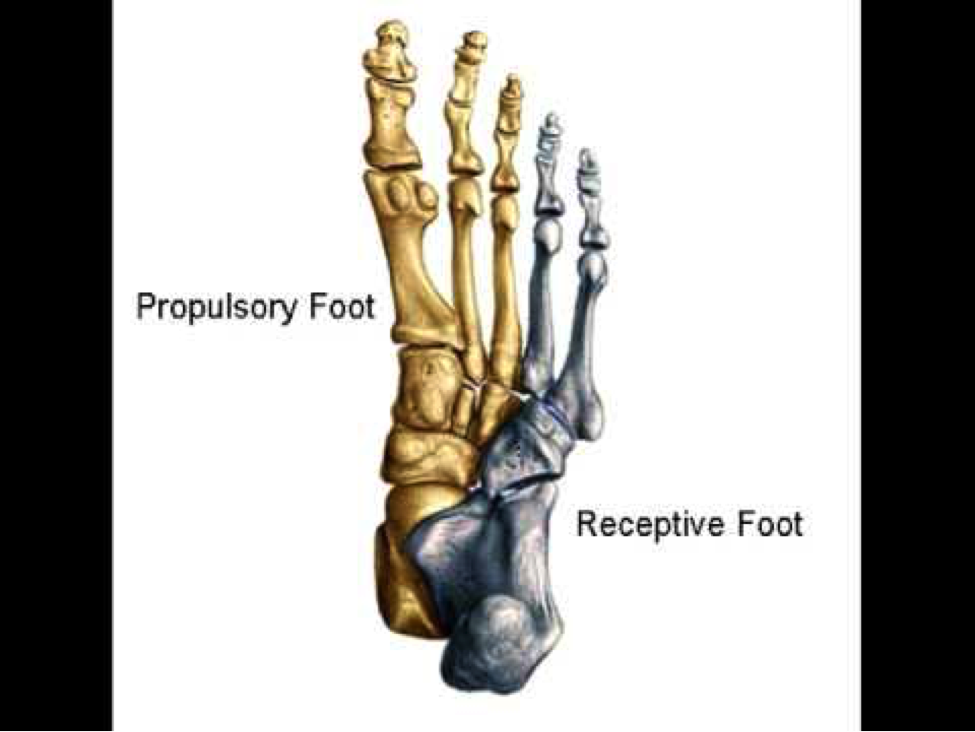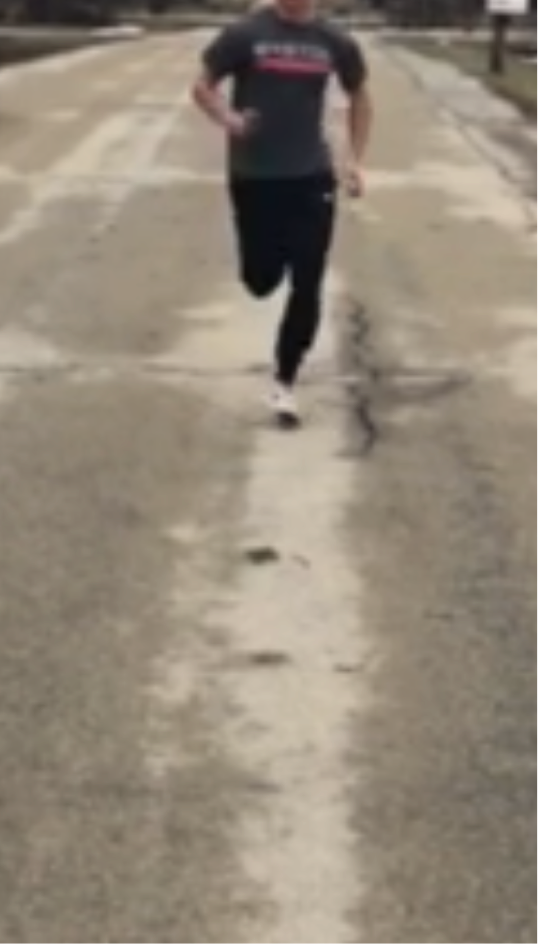
Spike Experimentation
I had an athlete come visit me for an assessment. He had some lower leg issues and wanted me to take a look at what was happening. I filmed him and started breaking down his form but I couldn’t really see what was happening. Usually the better the sprinter, the harder to find his power leak or flaw. He is a sub 11.0 100m dash sprinter. He then showed me with his spikes. As he was handing them to me, he showed me something peculiar on the outside of his spikes. The outer spikes were jammed inward (see pic). He is a very powerful and fast runner with an abbreviated stride length. And the contact on his left foot is supinated, as it it is on most runners. Then I mixed all of those variables into an equation and it made me think the following:
If he has ¼ inch spikes in his shoes and the spike is getting jammed in a backward and inward fashion he must be having an early contact which would cause a deceleration. The abrupt, premature deceleration would cause a lot of pressure in the area that was causing him pain (think shin splint). How many times have you listened to someone sprinting? Sometimes you can hear the sliding or scuffle sounds of an early contact. Not only that, but also we know that the person who decelerates the least is usually the one who has the fastest max velocity. Or, could the premature contact cause an early triggering of the stumble reflex and the shortening of his stride?

This made me wonder why we put the spikes in the way we do, where all of the spikes are the same length. Is it the human obsession with everything being even? Or it is it because the shoe companies neatly pack the ¼ and ⅛ inch spikes into nice packages and we just assume that because the shoe companies packaged them that way, we should put them in that way. But, do we have to put them all in evenly?
One way to look at the foot is that it is comprised of two sections, the receptive foot and the propulsive foot. The outside of the foot rolls the energy through to the forefoot and big toe which then propels the body forward. If the outside of the foot is truly the reflexive part of the foot, why do we need longer spikes on the outside, especially if they are causing an early contact and decelerating the athlete?
Thinking of all of this, I decided to break tradition and start mismatching the spikes on my athletes. I put ⅛ spikes on the outside of the shoes and put the ¼ on the forefoot and big toe. That way, there is some traction on the outside but I have bought a little more time for the foot to come more underneath the body. The ¼ will still be there to get a good grab on the track. Because the weather has been all over this spring (have practiced outside 9 times and we are 2 weeks from state), I can’t give a time improvement but my athletes like it better. They feel like they are running faster. More importantly, I don’t hear the skid.
Then, I thought I could apply this one step further. If I have two athletes that are making a left hand turn in the 4×1, couldn’t I apply the same principles to a turn? I took the ¼ inch spikes and put them on the outside of the shoes. ⅛ on the instep of both shoes and big toe of left and nothing on the outside corner of the left shoe. This will help them get more traction on turn and decrease the premature contact on the inside leg.
This concept can also applied to field cleats as well. Field cleats can sometimes hurt more than they help. There are general molds or cleat placements. An ideal placement for the ball of big toe cleat would be slightly behind the ball of the big toe. But, what if we have longer or shorter toes than the average person. That might put a cleat in a place that would cause a premature contact and breaking. Look at their wear pattern. If it is in front of the cleat, that could mean it is acting as a break and could cause all sorts of issues from poor performance to shin splints to something more major, like an ankle or knee injury.
Cleats can act as a very rigid orthotic and can push our ankles and knees in different directions. Again, it is that universal rule, because the shoe makes them that way, they should work for all of us. There’s nothing wrong with filing a cleat down so the whole shoe gives stability. Where it can get even more interesting is when you factor in the surface that you are playing on and how that shoe reacts to the surface. Then, you can factor in the temperature. Rubber, plastic and soil/grass all react differently at different temperatures and that may have a big impact on performance and injury. If it is very cold, the energy may transfer much faster than normal and the co-contractions may not be fast enough to protect the body.
Anyway, before I go further down the rabbit hole…
Try it and see what your athletes think.
By Chris Korfist
TFC-9
June 21-22
trackfootballconsortium.com
